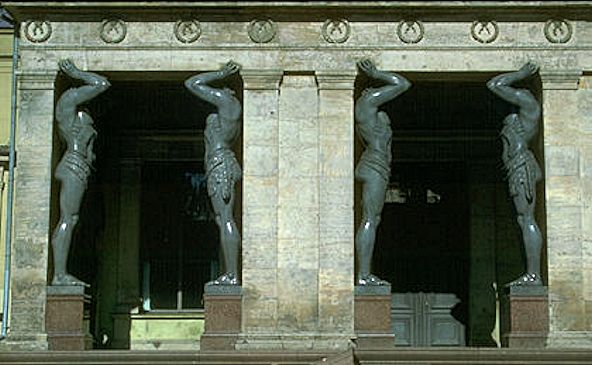2007.11.09 17:01
[C]Space Pavilion Blog launched...
And here I thought I was just being crazy.

2007.11.09 11:19
Depression
Like everything, depression is (literally!) part of a wavelength. If you learn how, catching and riding waves is exhilarating, addictive even, but nothing beats simply floating on the surface:
2005.06.27 15:32
architects. do you feel respected?
I saved two people once. It was the end of July and the beginning of August 1989 at Savannah Beach, Tybee Island. The first week of my vacation was over, and the first week's house guests had left, and I was then waiting for the second week's house guests to start arriving. The house was on one of the lanes in-between the numbered streets and second in from the beach. Since it was late afternoon, I left a note for my guests and decided to take a stroll on the beach. The beach was deserted, as was usual for that time of day, and I didn't even notice the couple way out in the water holding on to an inflated raft until the guy waved and yelled "Hey!" I thought he was being friendly, so I waved back and continued to stroll. Then I faintly heard, "We can't get back in." Within a second or two I thought, "Oh dear. Those people are going to be carried away rather quickly because I'd been watching the tidal movements the whole prior week. By the time I go back to the house and call for help they'll be way out there." Then I yelled back, "OK" and just started to swim out to them. I'm only an average swimmer, but I'm a great floater, so I wasn't really worried about myself. When I got to them I saw they were a couple, maybe married, maybe boyfriend and girlfriend, and they looked horribly sad. I just started to push them in, kicking my feet as much as possible, and, as slight waves came along, I told them to paddle with their feet as well (I haven't done it in years, but I used to spend whole afternoons body surfing whenever I was down the Jersey shore). Finally, our feet could touch bottom, and we all just began sighing with relief. On shore, we just stood there for a few seconds, they thanked me and I said you're welcome, and we walked away in different directions. Almost just then, I saw some of the second week's house guests walking onto the beach. They were all excited and they were thrilled about the location. I said, "You see those two people walking down the beach? I just saved their lives."
| |
2007.11.09 10:56
It rocked Eisenman on his chair...
Giovanni Battista Piranesi died today in 1778, on the feast of the dedication of the Basilica Constantiniani (known today as the Basilica of St. John Lateran), the first Christian basilica in Rome.
"Piranesi uses the Rome that was extent in the eighteenth century as a starting point, but that possesses no original value; it is merely a being in the present. From this existential moment of being, he takes buildings that existed in the first and second centuries, in Imperial Rome, and places them in the same framework of time and space as the eighteenth-century city."
--Peter Eisenman, "Notations of Affect. An Architecture of Memory" in Pathos, Affect, Gefühl (Berlin: Walter de Gruyter GmbH, 2004), pp.504-11.
If you actually study the Campo Marzio you'll find the starting point, framework and the millennium's worth of buildings that Piranesi utilized. First there are the altar and race course dedicated to Mars by Romulus in the mid-eighth century BC. Incidentally, this is how the Campo Marzio received its name--the fields of Mars. And to manifest the framework there is the last Imperial artifact of the Campo Marzio, the sepulcher of Empress Maria, wife of Honorius, from the early 5th century AD. Indeed the sarcophagus of Empress Maria holds a key position within the Il Campo Marzio publication. And to complete the framework, the last page of Il Campo Marzio depicts a double theater.
"reenacting forgetfulness"
how ironic
right?
and there's
more more more
Nolli Schmolli
and windless
Tafuri fury
2007.11.08 18:18
Name that Architect and Building!!!

architect and building?
2007.11.08 17:11
Name that Architect and Building!!!
Regarding the National Bank of the Republic, it is Robert Venturi that made the building well known in Complexity and Contradiction in Architecture. When Sullivan worked for Furness, the office was on the same block (300 Chestnut Street) as the National Bank of the Republic (or it was the next block west).
|